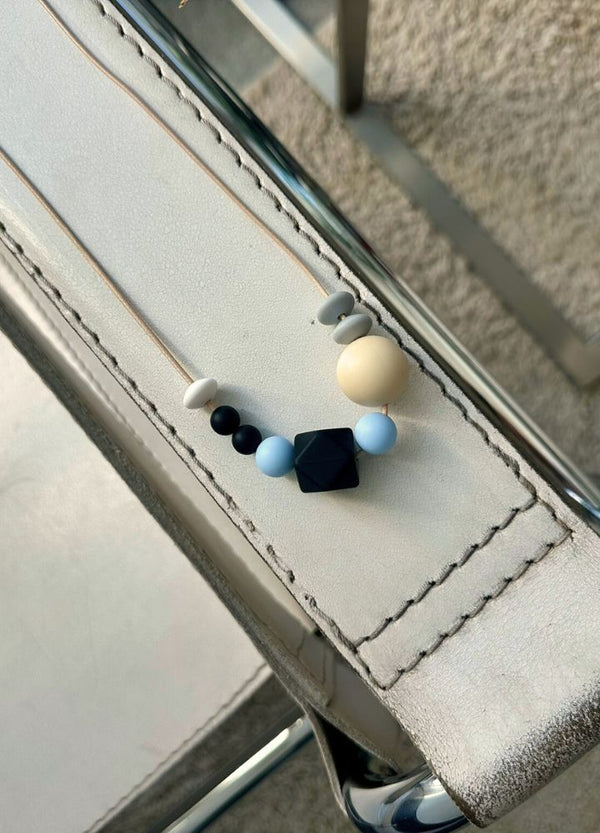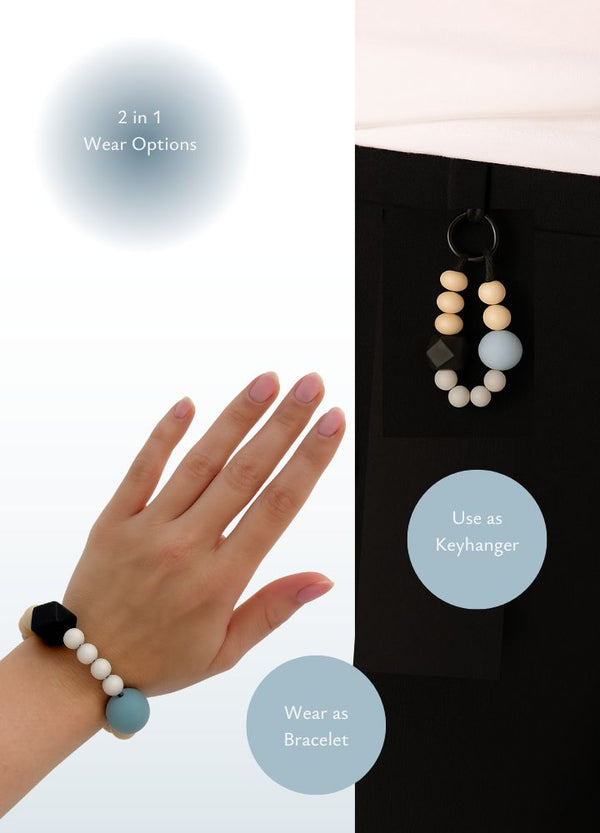What is Sensory Sensitivity?

Sensory sensitivity refers to heightened or reduced reactions to sensory stimuli. Those with sensory sensitivity may find everyday experiences, like bright lights or certain textures, overwhelming or, conversely, insufficiently stimulating.
Blusss provides elegant, reliable tools to help individuals navigate and embrace their unique sensory world. Discover our sensory sensitive solutions.
What Are the Signs of Sensory Sensitivity?
Sensory sensitivity exists on a spectrum, with individuals experiencing either heightened or reduced sensitivity to sensory input.
Hypersensitivity (Over-Responsive) Signs:
- Sensitivity to loud noises, bright lights, or strong smells (e.g., discomfort in shopping malls)
- Discomfort with certain fabrics, seams, or tags (e.g., rejecting scratchy clothes)
- Easily startled by unexpected touch or sudden movement
- Avoidance of crowded or noisy places
Hyposensitivity (Under-Responsive) Signs:
- Seeks deep pressure or rough textures (e.g., prefers tight clothing or heavy blankets)
- Craves movement, spinning, jumping, or fidgeting
- High pain tolerance (e.g., not reacting strongly to injuries)
- Slow response to stimuli, requiring stronger sensory input
These traits are not behavioral issues but neurological differences in how the brain processes sensory information.
What Causes Sensory Sensitivity?
Neurological Differences
Sensory sensitivity is linked to differences in how the brain processes sensory input. It is commonly seen in individuals with:
- Sensory Processing Disorder (SPD)
- Autism Spectrum Disorder (ASD)
- Attention Deficit Hyperactivity Disorder (ADHD)
- Highly Sensitive Person (HSP) traits
These conditions involve atypical responses to sensory stimuli, making everyday sensations feel either too strong or too weak.
Environmental & Genetic Factors
- Premature birth or early sensory deprivation may impact sensory processing.
- Genetics play a role, as sensory sensitivity often runs in families.
- Stress and anxiety can heighten sensory responses, making certain situations feel overwhelming.
How Does Sensory Sensitivity Affect Daily Life?
Sensory sensitivity impacts many aspects of daily life, from getting dressed to social interactions.
Children with Sensory Sensitivity
- May struggle with clothing textures, food textures, or loud environments.
- Can have meltdowns or avoid certain places due to overwhelming stimuli.
- Might need sensory tools or weighted items to feel comfortable.
Adults with Sensory Sensitivity
- Can feel overwhelmed in crowded places, bright lights, or noisy offices.
- May prefer specific fabrics, weighted blankets, or noise-canceling headphones.
- Often create controlled environments to reduce sensory overload.
Sensory sensitivity isn’t a limitation—it’s a unique way of experiencing the world.
How to Manage Sensory Sensitivity?
There are several strategies that help individuals manage sensory sensitivity effectively.
Sensory-Friendly Clothing & Environment Adjustments
- Wear soft, seamless clothing to avoid irritation.
- Adjust lighting, noise levels, and textures in daily environments.
Deep Pressure & Weighted Products
- Weighted blankets, compression vests, and lap pads provide calming effects.
- Deep pressure stimulation helps regulate sensory input and promotes relaxation.
Sensory Tools & Fidgets
- Tactile tools (e.g., stress balls, chewable fidgets) help with self-regulation and focus.
- Sensory-friendly furniture (e.g., wobble chairs) can provide movement input.
Controlled Environments & Sensory Breaks
- Creating quiet spaces helps individuals avoid overstimulation.
- Regular sensory breaks allow for self-regulation throughout the day.
Understanding which strategies work best is key to improving comfort and reducing sensory overload.
FAQs About Sensory Sensitivity
Is sensory sensitivity the same as Sensory Processing Disorder (SPD)?
No, SPD is a clinical condition, while sensory sensitivity can be part of autism, ADHD, HSP, or exist independently.
Can sensory sensitivity change over time?
Yes, some individuals adapt or develop coping mechanisms, while others remain highly sensitive throughout life.
Are there treatments for sensory sensitivity?
There is no "cure," but occupational therapy, sensory-friendly environments, and sensory tools can help manage challenges.
Conclusion
Sensory sensitivity affects how individuals experience and interact with the world. Whether it’s hypersensitivity or hyposensitivity, understanding these differences allows for better support, clothing choices, and lifestyle adjustments.
Want to learn more?
- Read about The Best Sensory-Friendly Clothing for Sensitive Skin
- Discover how Weighted Products Help with Sensory Regulation
By recognizing sensory needs, individuals can create environments that support comfort, focus, and well-being.
Blusss provides elegant, reliable tools to help individuals navigate and embrace their unique sensory world. Discover our sensory sensitive solutions.








